Padamshri Surjit Pattar pens lyrics of “Attari Junction” documentary
Indo-Pak Last Rail Connect
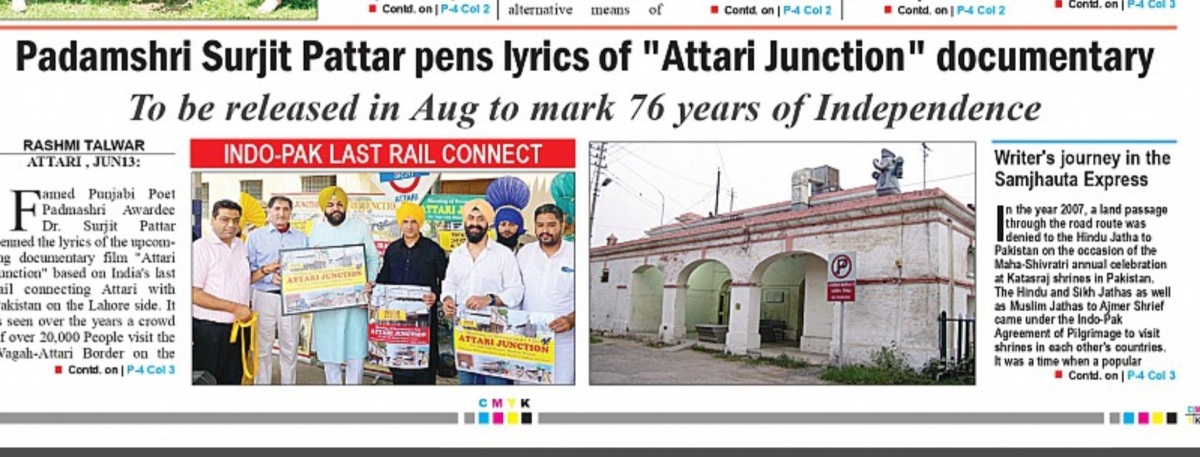
Padamshri Surjit Pattar pens lyrics of “Attari Junction” documentary
Documentary to release in August to mark 76 years of Independence
Rashmi Talwar Attari – (Amritsar) 13th June 2023…..
Famed Punjabi Poet Padmashri Awardee Dr. Surjit Pattar penned the lyrics of the upcoming documentary film “Attari Junction” based on India’s last rail connecting Attari with Pakistan on the Lahore side. Meantime it is seen over the years that a mammoth crowd of over 20,000 People visit the Wagah-Attari Border on the Indian side on average, daily, to watch the Beating Retreat Ceremony of the lowering of the flags; but, none visits Attari Railway Station, a 161-year old Heritage rich building and space that witnessed the Best and the Worst of human emotions, especially during partition and for decades later. Now it stands lonely, stupefied, and mute to the animosity between the economically disparate neighbours.
As the shooting began today, it came as no surprise -how both warring countries sitting side by side, simultaneously witnessed a common sunset. The manmade lines drawn did not dim the musical winds or the birds from crisscrossing, the melodies and drumbeats on both sides had an unhindered passage and audience beyond partitions. But the people of both countries are locked-in and are made to conjure up images of demonic forces across borders, by respective powers on both sides and the stakeholders in the continuation of this animosity.
Punjab’s eminent Author, heritage promoter, nature artist, and Director of the film- Harpreet Sandhu while talking to Greater Jammu said – “This short film will portray historical rich architecture of this 161-year old Attari Railway Station, which is a blend of Indo-Islamic and Victorian architectural styles. Its arches and ornate facades showcase an aura of grandeur and elegance of the architecture of the bygone era. Given the eyeball catcher- the Wagah Attari Retreat ceremony, this vital heritage of Railtrack has seldom been highlighted. The Documentary film under the patronage of Sewa Sankalp Society has been scripted by Atul Tirkey, IRS Deputy Commissioner Customs, Attari. No one could do more justice to the film’s lyrics than the Internationally renowned Punjabi Poet Dr. Surjit Pattar. The film whose shooting will be wound up in three days at Attari will be released to mark the 76th year of Indo-Pak Partition”, he added.
Shooting the film “Attari Junction” –began with the clapboard Mahurat shot by MP Amritsar Gurjeet Aujla, and Deputy Commissioner Amritsar Amit Talwar, in the presence of a battery of IRS, IPS, and IAS officers.
The director further revealed –“The film in trilingual languages are juxtaposed just as during those times. It will have the Deputy Commissioner Customs Atul Tirkey, as an actor speaking English, and I, Harpreet Sandhu, as Director, also a former Additional Advocate General, Punjab and Chairman of Punjab Infotech, would try to do justice to the film in Punjabi while retired Chief Commissioner Income Tax and Author Parneet Sachdev would be using Hindi.”
Is the purpose to only highlight heritage, even as all top officers are involved in this documentary? I asked –“We never wanted to it have a flimsy and commercial touch by bringing in famed Punjabi actors like Daljit Dosanjh. We have done a detailed script for nearly 8-months on how many kilometers was the stretch and at which times it was discontinued between the countries, the history behind it. Besides this, we looked into the outcome of this railway junction on the measurement of tourism, culture, trade exchange, and several other aspects. So I personally will not use the word that it’s a ‘big documentary’ but it is surely meaningful, compact and being made to solely highlight this 161-year old heritage of rail junction. My purpose and what I hope to achieve, is to spread awareness, about this last railway station that has witnessed the worst of Partition days. We all are putting in full effort. We have done extensive shooting of key actors playing commoners and have canned a fabulous train shot with a train arriving from Qadian to Attari. We also went up until the last gate and shot there as it was locked .” What did you do about the horses that used to gallop alongside the train on the Indian side? No, we haven’t looked into that. The necessary permissions for shooting the Documentary film have been obtained from various government agencies including the Northern Railway, New Delhi and Land Customs Attari, and the BSF authorities.
00—00
BOX
Writer’s Journey in the Samjhauta Express
In the year 2007, a land passage through the road route between India and Pakistan was denied to the Hindu Jatha to Pakistan on the occasion of the Maha-Shivratri annual celebration at Katasraj shrines in Pakistan. The Hindu and Sikh Jathas as well as Muslim Jathas to Ajmer Shrief came under the Indo-Pak Agreement of Pilgrimage to visit shrines in each other’s countries.
It was a time when a popular Pakistani actress had flouted the rules of specific city-based visas to visit Agra without a visa for the city of the Taj Mahal and was apprehended by Indian authorities. This took a toll on Pakistan over the Indian reprimand to the Pak embassy. A petulant Pakistan thus resorted to tit-for-tat retaliation denying the easy land-crossing to Indian Hindu Jatha, to divert it to the cumbersome rail journey on the rail Samjhauta Express.
Samjhauta Express was started in 1976 as a bi-weekly and was a symbol of a ‘train of emotions’ to help bridge the gap for the separated families of both countries.
So we arrived at the Attari Railway station at 8 o clock for the train of emotions, after much emotional trauma of being diverted at the last minute from the Wagah road route to the Attari rail route. The train arrived hours late. In the meantime, we explored the heritage rail station and absorbed the mechanism, of how the trains operated through an exhaustive hotline system of giving or holding back clearance to the train as per the whims and fancies of authorities of both countries. This time the special treatment of delayed clearance was reserved for the Hindu jatha. The old system of Red and Green flags to indicate stop and go were used. The bogeys were all 3rd class and non-AC 3-tiers with iron bars on windows just like the ones before the partition of 1947. Finally, after an exhaustive procedure of processing hundreds of cross-country travellers and loading baggage, most of us found ourselves sitting on sacks of luggage as the loaded train finally and painfully groaned out of the Attari station.
Although overjoyed at its finally starting to move, the train journey conjured up images of the year 1947 bloodied trains during partition which reached Amritsar and Lahore with dripping blood of cut-up bodies. My attention was diverted soon as I watched horse-mounted BSF personnel galloping alongside the train on the Indian side up until the gates opened up to no man’s land, and I caught the scenes in my portable Sony camera.
The train went into a deep sleep after every 15 minutes, as if its old bones felt tired under its heavy weight. In an interview with BBC, I told the channel how a distance of 3Kms stretch between the two countries took 12 hours to cross! This fact was highlighted as the catchword in every other channel.
Just a few days later in the early hours of midnight on 19th February 2007, a bomb blast took place in the Samjhauta Express at Chandni Bagh in Panipat Haryana India, in which 68 people were killed mostly Pakistanis. We, as the Hindu jatha of 175 people were still in Lahore after visiting Katasraj shrines in Pakistan. I had got a little ‘Palm Plant’ packed in Lahore, as a take-back memory home to Amritsar -an emotional keepsake of the soil of Pakistan and Lahore that once was the soil of the land of my paternal grandmother and my Multan-based grandfather.
However, we were rushed before the schedule to return to India due to security issues following the Samjhauta Blast. But I wouldn’t leave without my green plant. So while sitting on sacks again on the return, my little greenie also sat with me. My husband who waited for me at Attari railway station for nearly 4-hours before arriving at Attari was pointed out by a fellow also waiting for his mother arriving from Lahore that “People have picked up trees from Pakistan to bring to India!” My husband gaily pointed out that the person who could bring a tree from anywhere could only be Rashmi Talwar, his wife.
00–00
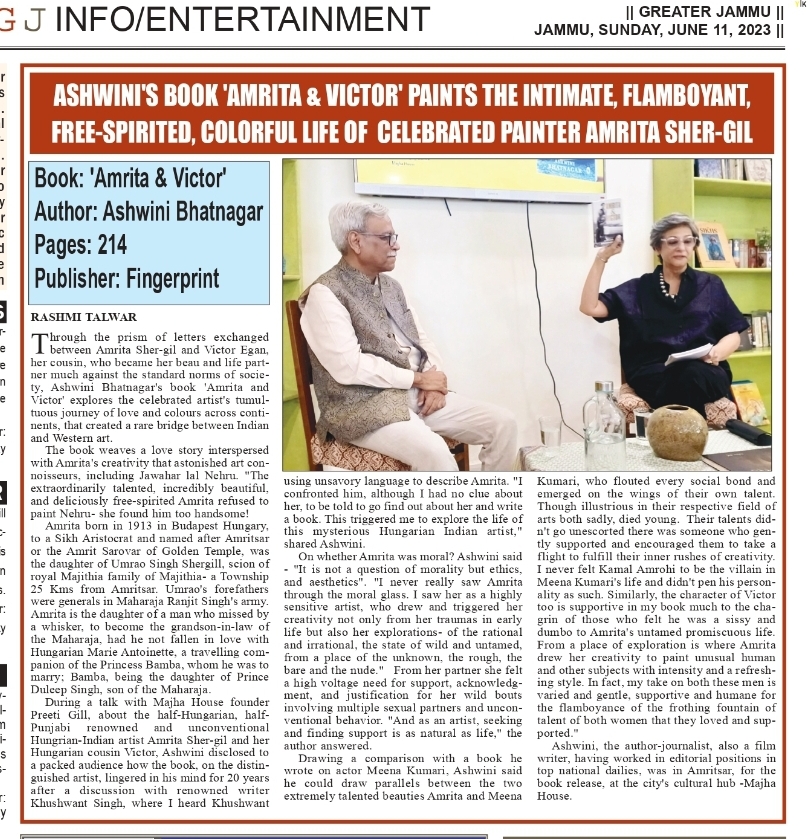
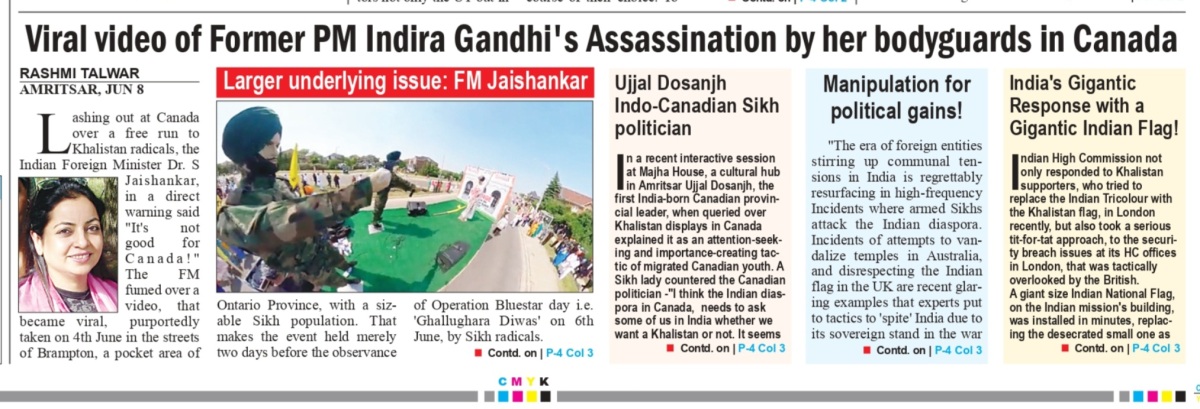
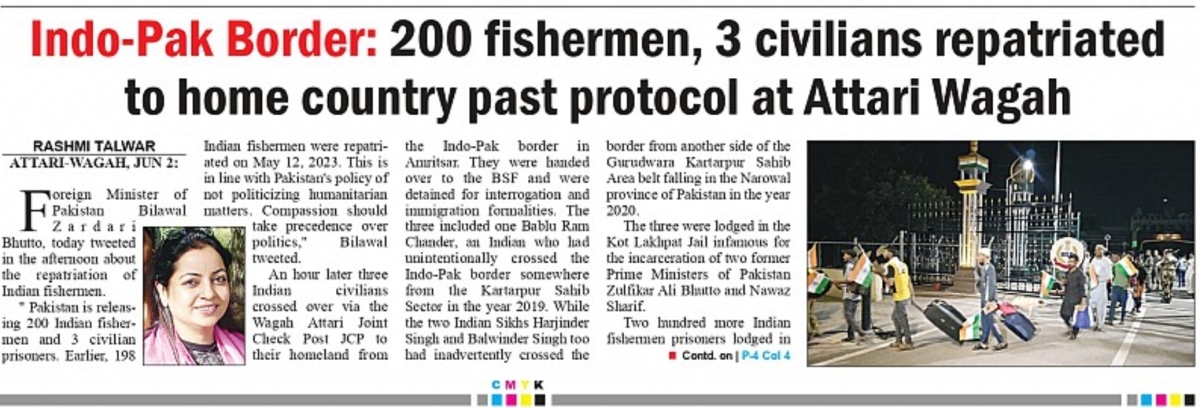

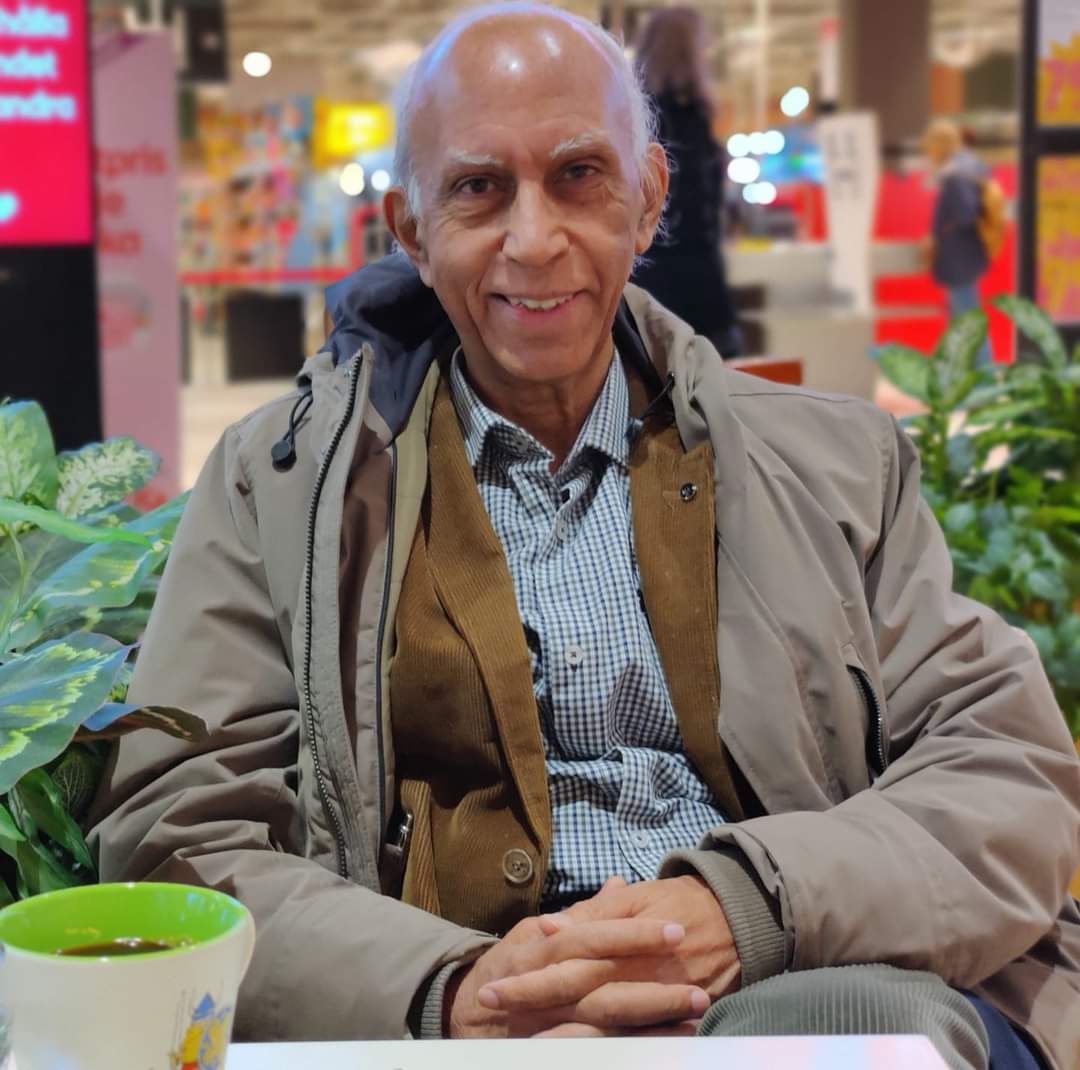











Recent Comments